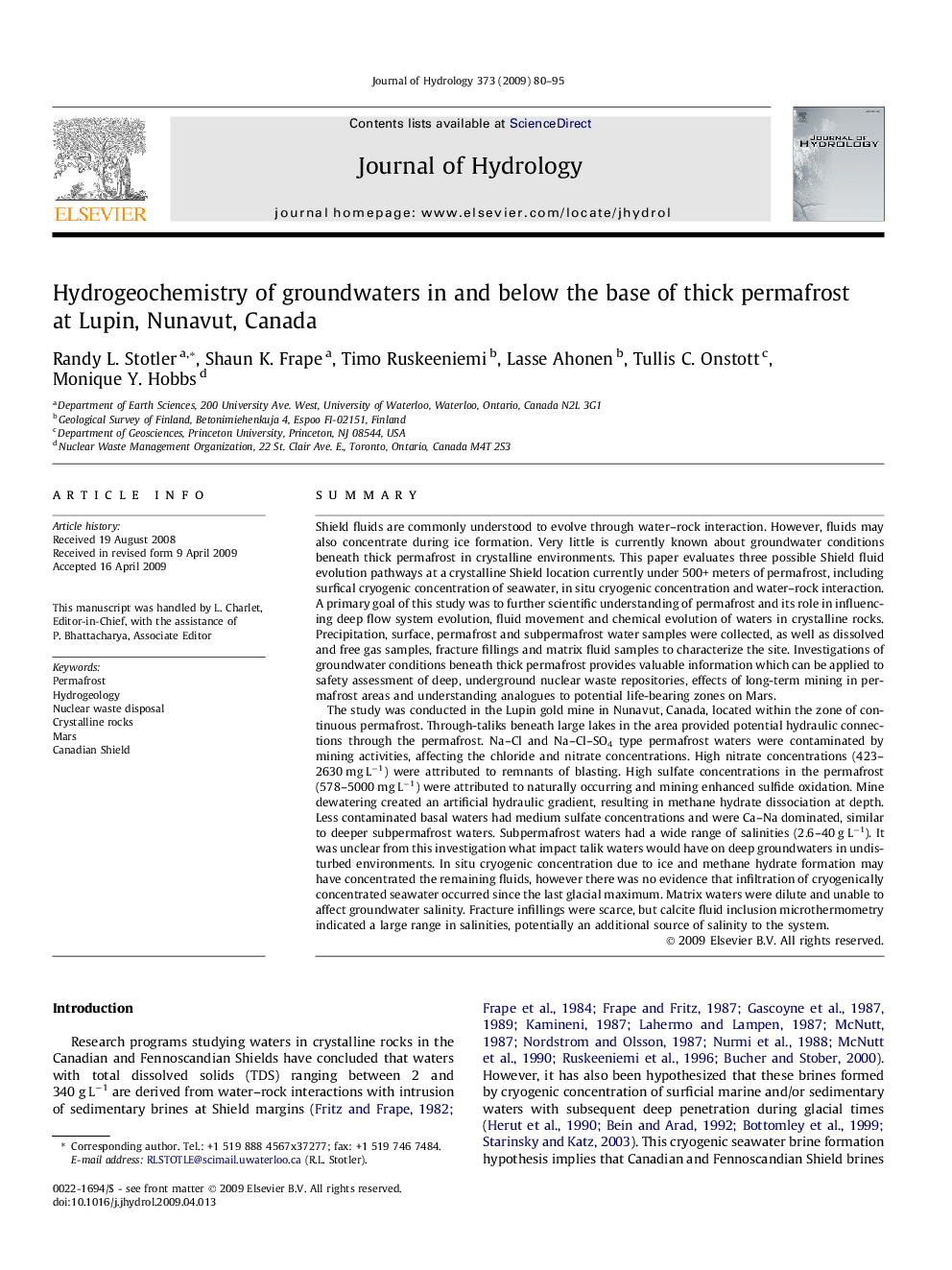| کد مقاله | کد نشریه | سال انتشار | مقاله انگلیسی | نسخه تمام متن |
|---|---|---|---|---|
| 4578858 | 1630079 | 2009 | 16 صفحه PDF | دانلود رایگان |

SummaryShield fluids are commonly understood to evolve through water–rock interaction. However, fluids may also concentrate during ice formation. Very little is currently known about groundwater conditions beneath thick permafrost in crystalline environments. This paper evaluates three possible Shield fluid evolution pathways at a crystalline Shield location currently under 500+ meters of permafrost, including surfical cryogenic concentration of seawater, in situ cryogenic concentration and water–rock interaction. A primary goal of this study was to further scientific understanding of permafrost and its role in influencing deep flow system evolution, fluid movement and chemical evolution of waters in crystalline rocks. Precipitation, surface, permafrost and subpermafrost water samples were collected, as well as dissolved and free gas samples, fracture fillings and matrix fluid samples to characterize the site. Investigations of groundwater conditions beneath thick permafrost provides valuable information which can be applied to safety assessment of deep, underground nuclear waste repositories, effects of long-term mining in permafrost areas and understanding analogues to potential life-bearing zones on Mars.The study was conducted in the Lupin gold mine in Nunavut, Canada, located within the zone of continuous permafrost. Through-taliks beneath large lakes in the area provided potential hydraulic connections through the permafrost. Na–Cl and Na–Cl–SO4 type permafrost waters were contaminated by mining activities, affecting the chloride and nitrate concentrations. High nitrate concentrations (423–2630 mg L−1) were attributed to remnants of blasting. High sulfate concentrations in the permafrost (578–5000 mg L−1) were attributed to naturally occurring and mining enhanced sulfide oxidation. Mine dewatering created an artificial hydraulic gradient, resulting in methane hydrate dissociation at depth. Less contaminated basal waters had medium sulfate concentrations and were Ca–Na dominated, similar to deeper subpermafrost waters. Subpermafrost waters had a wide range of salinities (2.6–40 g L−1). It was unclear from this investigation what impact talik waters would have on deep groundwaters in undisturbed environments. In situ cryogenic concentration due to ice and methane hydrate formation may have concentrated the remaining fluids, however there was no evidence that infiltration of cryogenically concentrated seawater occurred since the last glacial maximum. Matrix waters were dilute and unable to affect groundwater salinity. Fracture infillings were scarce, but calcite fluid inclusion microthermometry indicated a large range in salinities, potentially an additional source of salinity to the system.
Journal: Journal of Hydrology - Volume 373, Issues 1–2, 30 June 2009, Pages 80–95